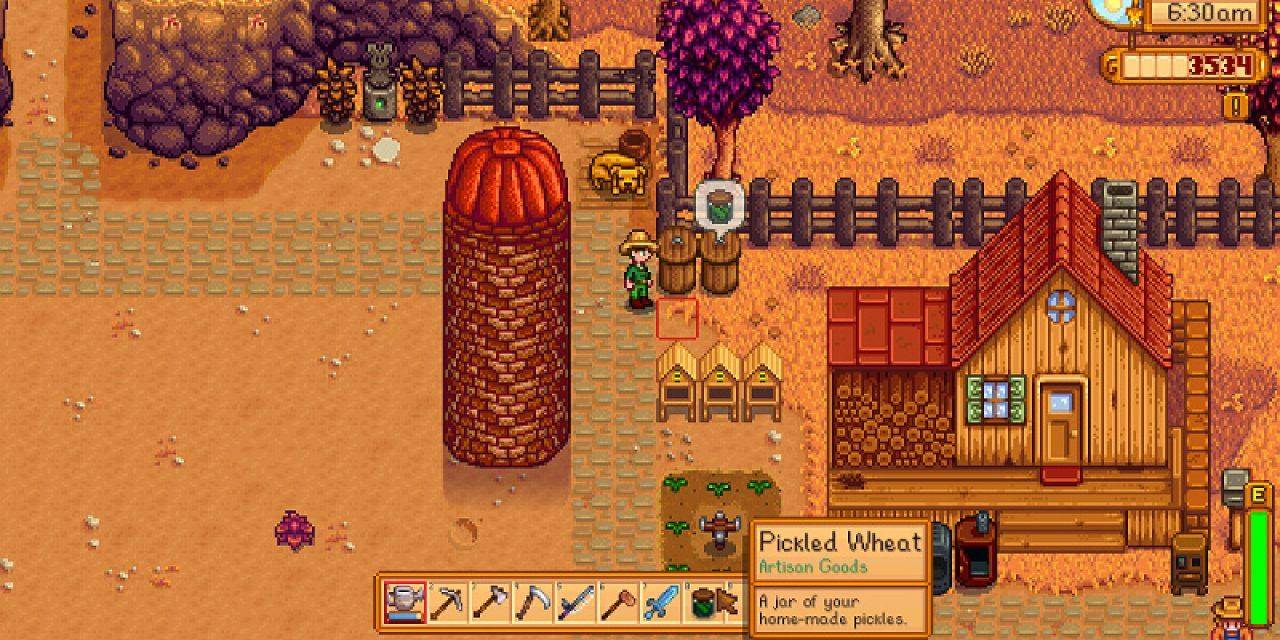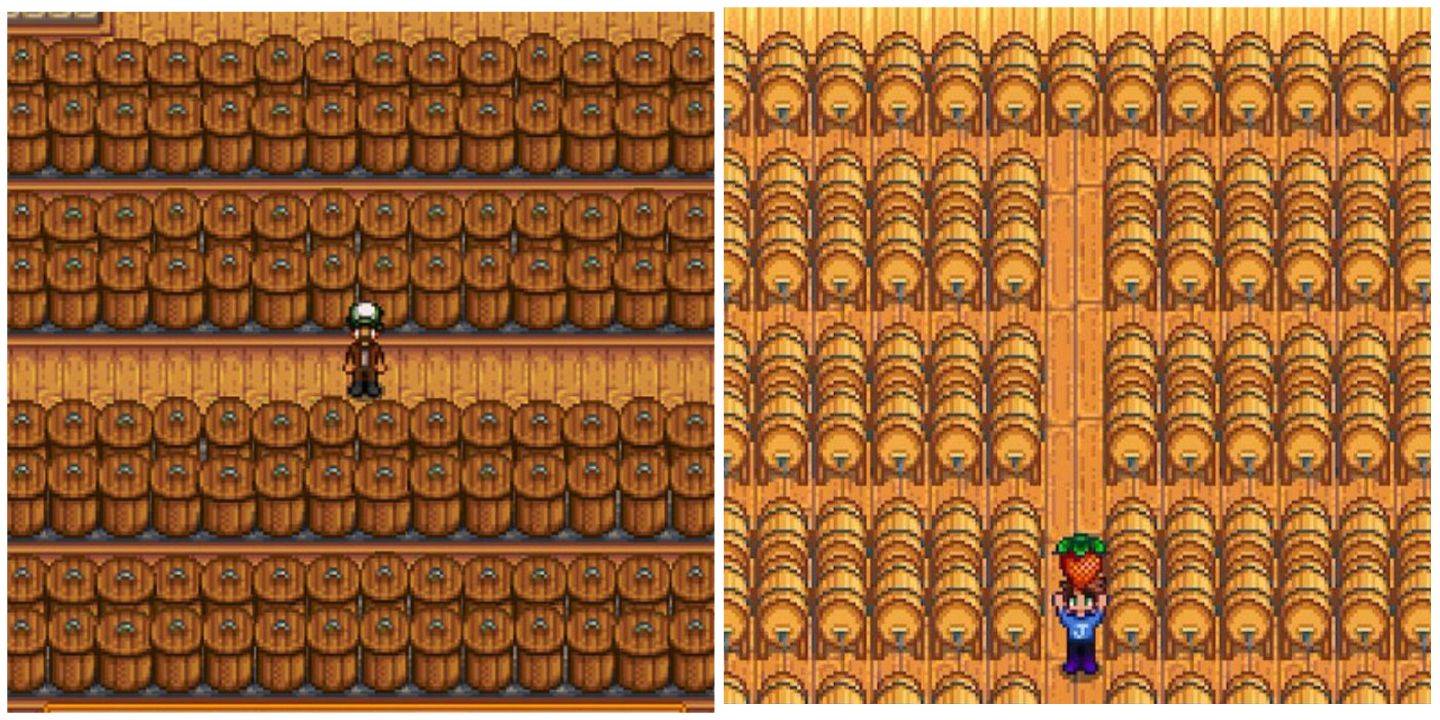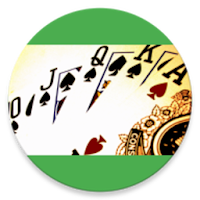Using crops to craft artisan goods is one of the most lucrative strategies for earning money in Stardew Valley. While it's typically at higher levels that players set up extensive operations to produce  Jelly and
Jelly and  Wine,
Wine,  Preserves Jars are available early in the game, allowing even novice players to leverage them effectively.
Preserves Jars are available early in the game, allowing even novice players to leverage them effectively.
Preserves Jars offer a versatile range of artisan goods that players can produce. By crafting these jars, players can significantly boost their profits from fruits and vegetables, making them an essential component for maximizing the potential of Fish Ponds. Here's a comprehensive guide on how to utilize Preserves Jars in Stardew Valley.
Updated January 11, 2025, by Demaris Oxman: Stardew Valley's 1.6 update introduced an exciting new feature for farmers: the ability to pickle many new items! From common foraged items like  Dandelions to rare treasures like
Dandelions to rare treasures like  Purple Mushrooms, these can now be placed in a Preserves Jar to enhance their value. This guide has been updated to cover the new possibilities for using this essential farm item.
Purple Mushrooms, these can now be placed in a Preserves Jar to enhance their value. This guide has been updated to cover the new possibilities for using this essential farm item.
Where To Get Preserves Jars In Stardew Valley
 To craft a Preserves Jar, players must reach Farming Level 4 to unlock the recipe. The materials needed are:
To craft a Preserves Jar, players must reach Farming Level 4 to unlock the recipe. The materials needed are:
- 50
 Wood
Wood - 40
 Stone
Stone - 8
 Coal
Coal
These materials are easily obtainable, making Preserves Jars an excellent choice for players aiming to produce artisan goods quickly. Wood comes from chopping trees, Stone from breaking rocks with a pickaxe, and Coal can be efficiently farmed by defeating dust sprites in the Mines.
In addition to crafting, players can earn one Preserves Jar by completing the Quality Crops Bundle (or Rare Crops Bundle if remixed) in the Community Center. They might also find them in the Prize Machine at Mayor Lewis' house.
What Are Preserves Jars Used For In Stardew Valley?
 Preserves Jars can transform various items into different types of artisan goods. Choosing the Artisan profession at Farming Level 10 increases the sale price of these goods by 40%.
Preserves Jars can transform various items into different types of artisan goods. Choosing the Artisan profession at Farming Level 10 increases the sale price of these goods by 40%.
| Item | Product | Sell Price | Health/Energy | Processing Time |
|---|---|---|---|---|
| Fruit |  Jelly Jelly | 2x (base fruit value) + 50 | For edible fruit: - 2x base fruit energy - 2x base fruit health For inedible fruit (e.g., Coconut): - Health: 0.5x base fruit value - Energy: 0.225 base fruit value | 2-3 in-game days |
| Vegetable, Mushroom, or Forage |  Pickles Pickles | 2x (base item value) + 50 | For edible items: - 1.75x base item energy - 1.75x base item health For inedible items (e.g., Pumpkin): - Energy: 0.625x base item value - Health: 0.28125 base item value | 2-3 in-game days |
| Sturgeon Roe |  Caviar Caviar | 500g | - 175 Energy - 78 Health | 4 in-game days |
| Any Other Fish Roe |  Aged Roe Aged Roe | 60 + (base fish price) | - 100 Energy - 45 Health | 2-3 in-game days |
Only Mushrooms and Forage items that provide positive energy when eaten, such as Chanterelle or Winter Root, can be used in Preserves Jars. Poisonous items like Red Mushroom and Holly cannot be pickled.
The sell prices are calculated using the base value of the item, disregarding its quality. Thus, a Jelly made from a gold-quality Apricot has the same value as one made from a normal-quality Apricot. To maximize profit, players should use their lowest-quality produce in Preserves Jars.
Preserves Jars or Kegs?
 Preserves Jars are often compared to Kegs, as both can turn fruits and vegetables into artisan goods. Preserves Jars are more profitable for fruits with a base value under 50g and vegetables/forage items under 160g due to the pricing formulas. Additionally, Preserves Jars process goods faster than Kegs. Ideal crops for Jelly and Pickles include high-yield, low-value items like Eggplants, wild foraged berries, Corn, and Tomatoes.
Preserves Jars are often compared to Kegs, as both can turn fruits and vegetables into artisan goods. Preserves Jars are more profitable for fruits with a base value under 50g and vegetables/forage items under 160g due to the pricing formulas. Additionally, Preserves Jars process goods faster than Kegs. Ideal crops for Jelly and Pickles include high-yield, low-value items like Eggplants, wild foraged berries, Corn, and Tomatoes.
Preserves Jars are also unique in their ability to process Fish Roe into artisan goods, making them crucial for Fish Pond setups. Mushrooms, which cannot be used in Kegs, can only be processed in Preserves Jars or Dehydrators, with the former typically offering a higher profit margin.









